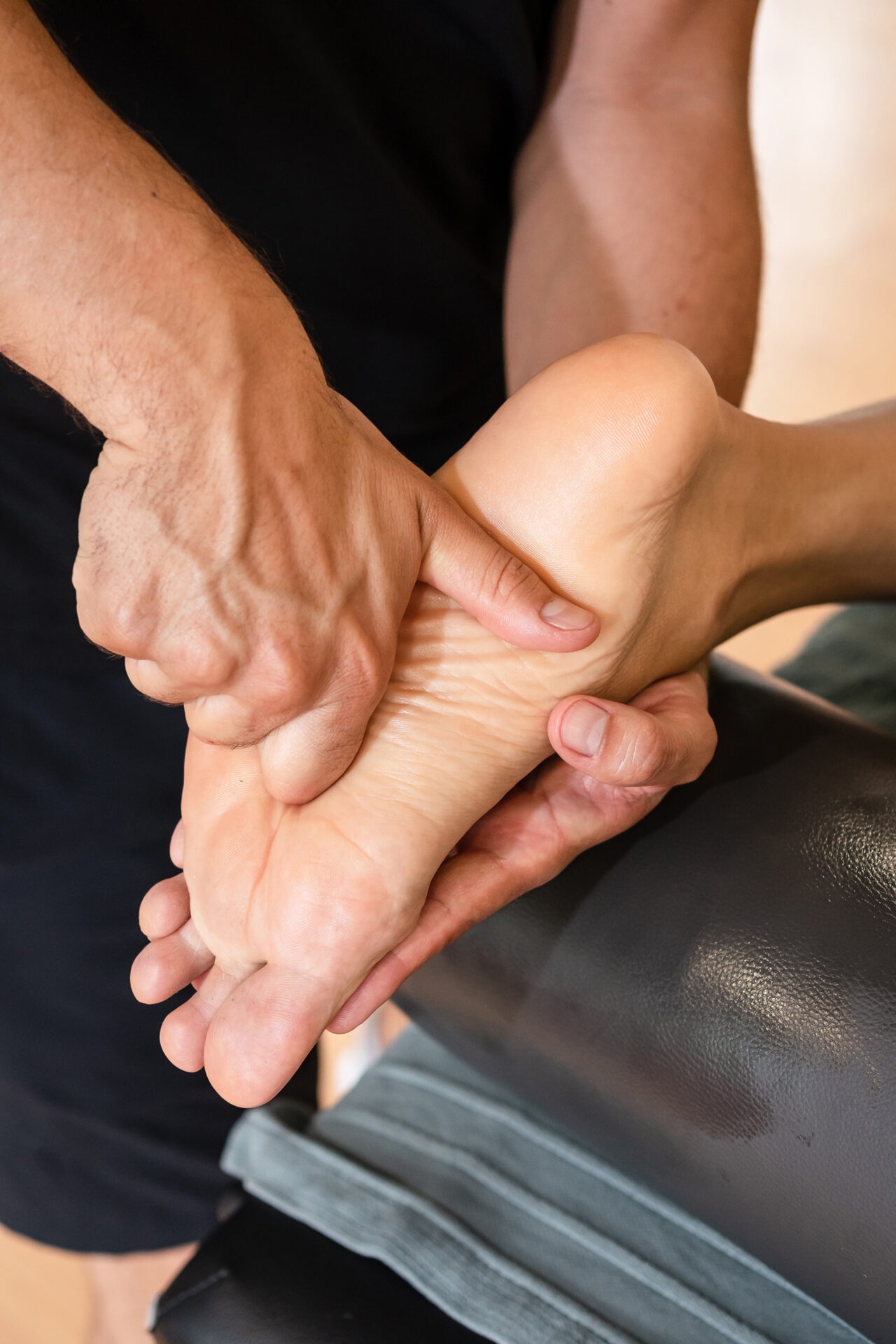What are Ankle & Foot Injuries?
Your feet and ankles carry you through life—so when something goes wrong, it can affect everything from walking to sport to just feeling stable and secure. Whether you’ve sprained your ankle, developed plantar fasciitis, or are recovering from surgery or a fracture, we can help get you back on your feet (literally).
Our physiotherapists will assess your movement, strength, and walking pattern to identify what’s going on and how best to treat it. You’ll get a tailored plan that may include manual therapy, strengthening work, balance training, and specific advice on footwear and activity modification.
We also see a lot of runners and active people with niggles like Achilles pain or metatarsal issues—early treatment is key to avoiding long lay-offs. With the right care, your foot and ankle can regain strength, mobility, and confidence. Don’t let pain limit your lifestyle—let’s fix it together.

FAQs
Frequently Asked Questions
What has caused my Ankle & Foot pain?
Ankle and foot pain can be caused by various things. Sometimes it might be part of a sudden injury such as twisting your ankle or after a fall, or may slowly creep up on you, such as plantar fasciitis.
Foot posture and biomechanics are often a contributing factor, and the physiotherapist can assess this for you.
How long does it take to recover from Ankle & Foot pain?
Acute injuries often settle within a few weeks with the right treatment. Other injuries may need treatment over a longer time frame, especially if you’ve been having issues or niggles for a while.
The physiotherapist will discuss this with you at your first appointment.
What treatments are available for Ankle & Foot pain?
This will depend on what the physiotherapist finds on the assessment but could include hands on treatments, advice, exercises, taping and stability/balance work. At the first and subsequent appointments the physiotherapist will discuss with you the best options, so that together you can decide the best approach for you.
If you need orthotics for your shoes we can recommend and supply some off-the-shelf insoles or refer you onwards to a specialist.
Will I need an X-ray or MRI?
This is often not needed.
An X-ray will be needed if a fracture is suspected as a result of an injury.
A MRI or ultrasound is most useful when considering next steps if physiotherapy has not been helpful, such as planning for surgery or an injection.
The physiotherapist will be able to discuss this with you and if necessary refer you to an appropriate service.
Can physiotherapy help prevent Ankle & Foot Injuries from recurring?
Yes there is evidence that physiotherapy and exercise/activity can reduce further recurrences, especially of ankle instability.
